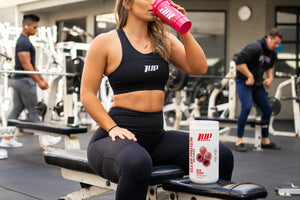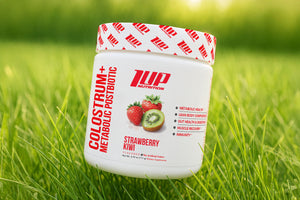When embarking on the Spring transformation challenge, many individuals aren’t sure if they should cut or bulk. Registration starts March 31st. Photo uploads due the week of April 27th and and challenge starts May 4th.
We’ll be honest up front and tell you that there is no one set answer for every single person.
The decision of whether to cut or bulk is impacted by many factors including:
- Current body composition
- Athletic goals
- Job
- Age
- And many others
Thus, there isn’t a one-size-fits-all answer for those asking whether or not they should cut or bulk.
In this article, we’ll discuss four “bulk or cut” scenarios commonly encountered by regular gym goes (along with the pros and cons of each), in an effort to help you decide what to do based on your current situation.
But, before we get to the examples, we need to make something very clear...
The Decision is Ultimately Up to You!
At some point or another, we all tend to get caught up in what we’re “supposed” to do, rather than doing what we “want” to do.
Quite often, you’ll hear that if you have less than “x%” body fat you should bulk, and if you have more than “x%” body fat, then you should cut.
And, sure, that’s all well and good for the masses.
But, at the same time it neglects any goal or preference for what you as an individual may want to do with your physique.
Not if you are severely overweight, you don’t need to worry about bulking. You need to focus on losing body fat and getting to a healthy weight in order to improve your health, longevity and overall quality of life.
On the flip side, if you are very underweight, you do not need to be cutting. You need to work on your nutrition habits and increasing your bodyweight.
Assuming you’re not at either end of the spectrum, and that you’re more likely in the middle, we believe that your desired end goal should be the driver of your decision of whether to cut or bulk.
For instance, if you like being lean and don’t want to lose your abs, but at the same time, you want to build muscle, you can try doing a “lean gain” where you eat at maintenance or slightly above.
The drawback here is that progress will be slow, so slow that you might think you’re not making any progress. That’s when you have to decide how important it is to maintain your current physique vs what you want your end goal to be.
With that said, let’s now look at the various factors that affect the decision to cut or bulk.
Factors to Consider When Deciding to Cut or Bulk
Current Body Fat Percentage
Quite possibly the single biggest factor that will impact your decision to bulk or cut (at least for those of you chasing aesthetics) is the amount of body fat you’re currently carrying.
Excess body fat can have numerous adverse effects on your metabolism and performance in the gym.
For example, carrying high amounts of body fat reduces insulin sensitivity, nutrient partitioning, and protein synthesis.[1]
Basically, excess body fat impairs the body’s ability to process and store carbohydrates and fats as well as reduces muscle building via blunting mTOR signaling.
There’s also the other adverse effects of high body fat levels to consider, such as hypertension, hormone disruption, sleep apnea, and arthritis.[2]
If you have high levels of body fat, cutting should be a top priority.
Training Experience
Individuals that are new to consistent training typically don’t need to decide whether to bulk or cut.
Provided they eat at maintenance calories (or a slight deficit) and train hard, they can recomp, whereby their bodies are able to lose fat and build muscle at the same time.
The reason for this is that novices (or those who have had a long layoff from the gym) benefit from the new stimulus that consistent, progressive resistance-training provides. Essentially, these individuals are “hyper-sensitive” to the effects of resistance-training since their bodies have never experienced a stimulus like it before.
However, if you are a more experienced individual, your ability to recomp isn’t quite as powerful. For the experienced gym goer (i.e. someone who has consistently trained for several years), it’s more efficient to bulk or cut.
Goals
As we mentioned above, what your own personal goals are also factors into deciding whether to cut or bulk.
If you currently participate in a weight-class restricted sport, bulking or cutting could affect your eligibility to compete. Even other sports which don’t have weight classes, such as baseball or football, gaining too much weight or losing too much could impair your performance on the field.
Now, let’s look at a handful of examples to help you better decide which approach (bulking or cutting) is more appropriate.
Examples of Whether You Should Cut or Bulk
Example #1: Novice with Normal Body Weight
Many individuals signing up for our transformation challenge find themselves in this scenario.
You’re not skinny or fat and haven’t done a lot of consistent resistance training. You’re average.
If this is you, then you don’t really have to make a decision at all.
All you really need to do is eat at maintenance and get after it in the gym.
Your body will be very responsive to training. As such, you’ll be able to lose some body fat and build muscle.
After a couple weeks of hard training and consistent eating, you’ll have an idea of how your body responds to training and from there can adapt as needed.
If you want to gain muscle faster, you can up your calories by 200-300 calories, or if you’d like to start getting super lean, you can reduce your calories by 300-500 calories per day.
Example #2: Novice with Some Body Fat
Even though you may have more body fat on your frame than you’d prefer, we’d still follow the plan from above -- eat at maintenance and train hard.
Since you’ve never trained consistently following a structured resistance-training program, you will be able to build appreciable amounts of muscle and strength while keeping your calorie intake relatively the same.
As you continue to gain strength, your body composition will improve due to losing fat and building muscle, helping you achieve the aesthetics you desire.
Now, you can choose to drop your calories and diet hard, but you might as well take advantage of those “newbie gains” and recomping while you can.
Example #3: Novice with Excess Body Fat
In this scenario, you are carrying around a considerable amount of body fat and haven’t been training consistently.
If this is you, your top priority is training hard while eating at a calorie deficit. Your body already has ample energy stored (body fat). As such, there’s enough to support muscle building and training, even though you are dieting.
Since you’re inexperienced with training, you’ll still be able to build muscle as you strip away the fat.
Once you’ve gotten down to a reasonable body fat percentage, you can then decide if you want to embrace a full-on bulk. But until that time, focus on cutting (dieting) while consuming a high-protein diet and training hard in the gym.
Example #4: Experienced and Overweight
Experienced lifters have been training consistently for years. As such, they’ve tapped out their “newbie” gains, and recomping (while still feasible) is a long, arduous process.
If you are experienced and overweight, you need to devote the next several (4-8) weeks to cutting, even if your long-term goal is to build more muscle.
Now, you still need to consume enough protein and train hard, as both of these will help retain muscle in the face of a calorie deficit.
This short term, mini-cut will improve insulin sensitivity, nutrient partitioning, and self confidence, all of which will fuel the fire when you embrace your next muscle-building phase.
Takeaway
Many individuals struggle with deciding whether to bulk or cut.
Complicating things is the fact that there is not a single “correct” answer for all scenarios.
In general, if you are very overweight, you need to cut down to a healthy body weight, which will potentiate your muscle and strength-gaining abilities down the road.
However, if you are not very overweight, deciding whether to cut or bulk is based on several factors including body composition, training age, time table, and personal preference.
If you are already very lean, then you can decide to maintain or build muscle. If you do decide to embrace a bulking (mass) phase, realize that the days of the “dreamer bulk” where you eat everything in sight are long gone.
The amount of calories you need to eat to support muscle growth isn’t as large as what we’ve been led to believe.
Most people looking to build muscle and gain strength only need to consume ~350-500 additional calories per day above maintenance. This amount is sufficient enough to support muscle growth and recovery without fueling excessive fat gain.
Regardless of which avenue you choose (cutting or bulking), it’s important to assess your progress weekly by recording measurements and body weight, tracking poundages during training sessions, and taking progress photos.
This way, you know whether or not what you are doing in the gym and the kitchen is actually having any effect or if you need to tweak things.
Before you invest majorly into significant portions of supplements, try out some supplement samples to find out what works best for you!
References
- Katsanos, C.S. and Mandarino, L.J. (2011), Protein Metabolism in Human Obesity: A Shift in Focus From Whole‐Body to Skeletal Muscle. Obesity, 19: 469-475. doi:10.1038/oby.2010.290
- Singla P, Bardoloi A, Parkash AA. Metabolic effects of obesity: A review. World J Diabetes. 2010;1(3):76–88. doi:10.4239/wjd.v1.i3.76






